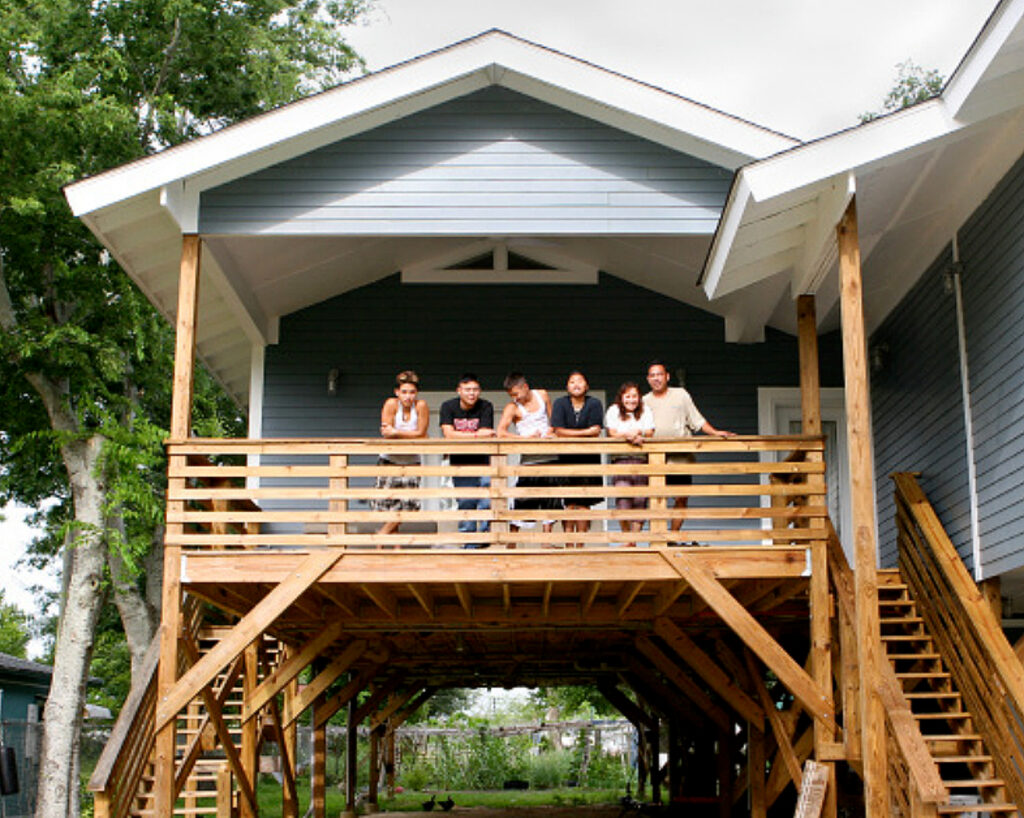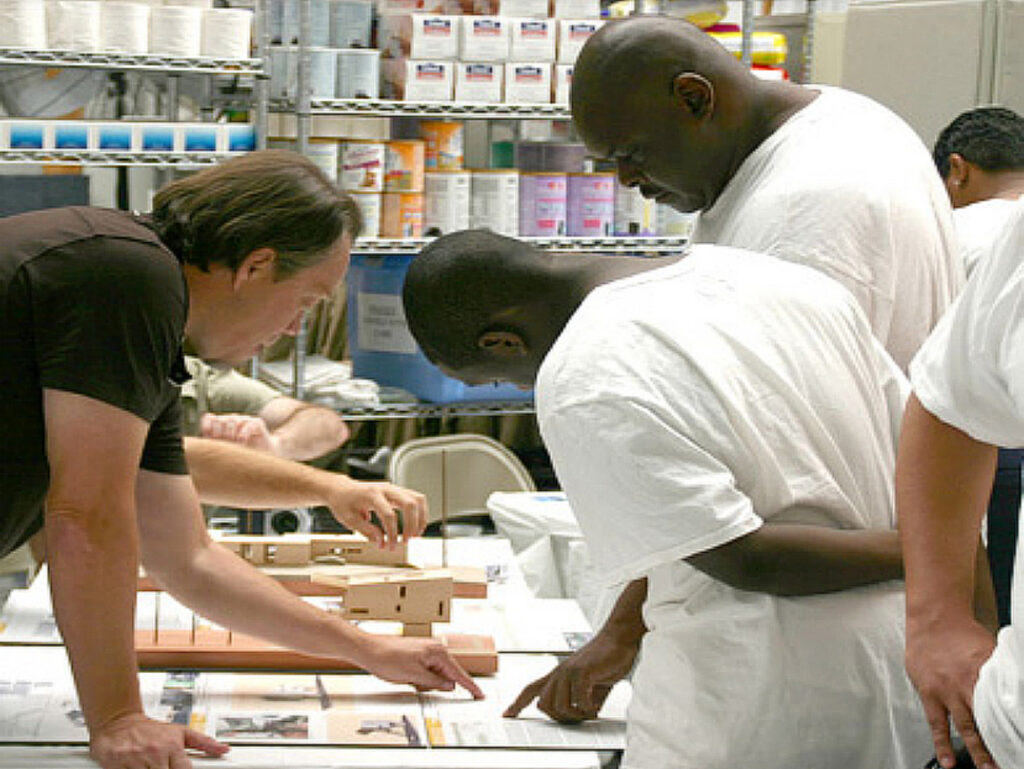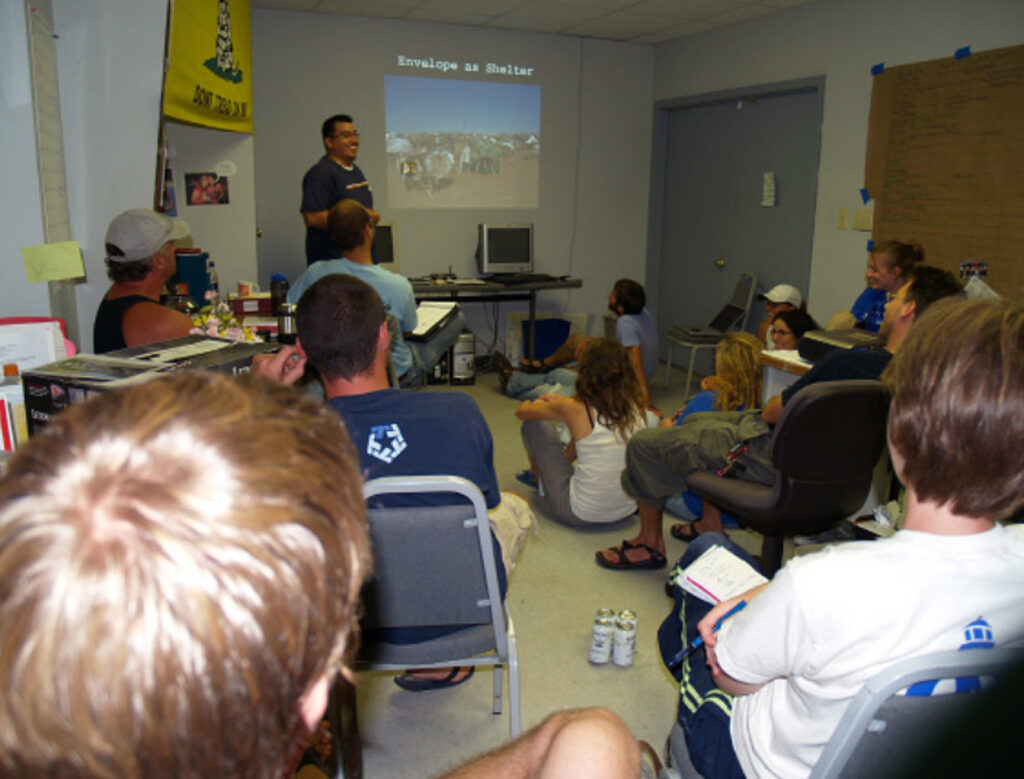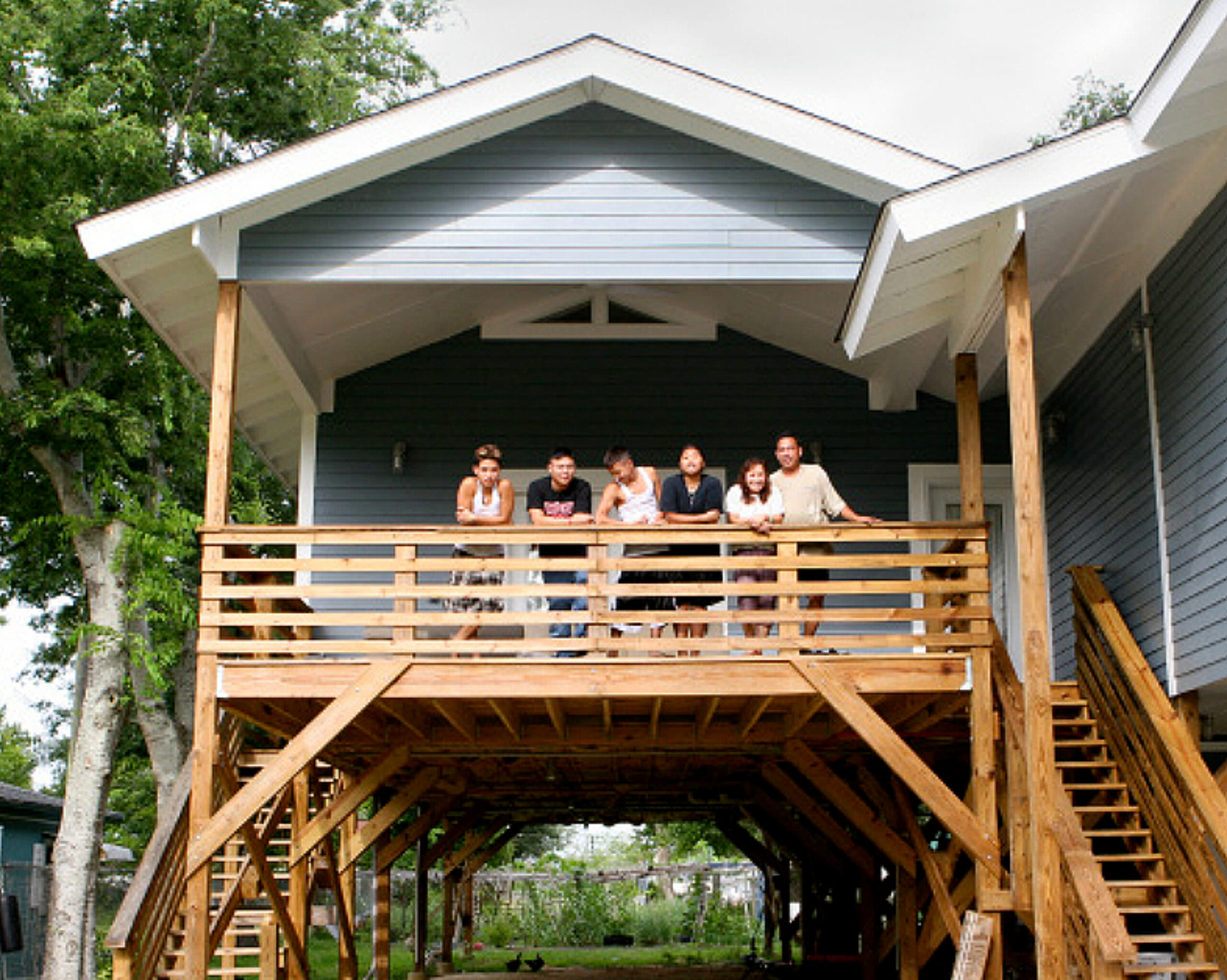| Location | Biloxi, Mississippi, USA |
| Date | 2005-8 |
| End User | 7 families |
| Community Development Agency | Hope Coordination Center (now the Hope Community Development Agency) |
| Implementing Partner | Architecture for Humanity |
| Program Partners | Enterprise Corporation of the Delta, The Gulf Coast Community Design Studio of Mississippi State University School of Architecture, Art + Design, Hands On Gulf Coast, Warnke Community Consulting |
| Design Firms | Brett Zamore Design; CPDWorkshop; Gulf Coast Community Design Studio of Mississippi State University School of Architecture, Art + Design; Huff & Gooden Architects; Marlon Blackwell Architect; MC2 Architects; Studio Gang |
| Structural Engineer | Black Rock |
| Contractors | More than 300 volunteer groups and construction firms |
| Funders | Autodesk; Blinds.com; Caesarstone; Chris Madden Inc.; Daltile; Duo-Gard; IBM; Isle of Capri Casino; JamesHardie; Kohler; McCormick Tribune Foundation; Nourison; Oprah’s Angel Network; Senox, University of Arkansas |
| Number of units | 7 pilot homes (Model Home Program): 100 new construction; 787 rehabbed homes |
| Unit types | 2-4 bedroom single-family residences |
| Area | 18-130 sq m/200-1400 sq ft |
| Construction cost per unit | $145 000 USD (new construction); $20 000-$60 000 USD (damage rehab) |
| Program Cost | $5 million USD (including $3.3 million USD revolving loan fund) |

The Nguyen family stands on the deck of their new home designed by MC2 Architects. Photo: Alan Richardson/Architecture for Humanity
The Biloxi Model Home Program was created to assist residents of Biloxi, Mississippi, in meeting the challenges of rebuilding their community after Hurricane Katrina.
East Biloxi, an ethnically diverse community with a large Vietnamese immigrant population, was one of the hardest hit areas of the Gulf Coast. More than go percent of the neighborhood’s housing stock was damaged or destroyed. Even before the devastation of Hurricane Katrina, the community suffered from poverty, drug activity and disinvestment.
Nearly one in four East Biloxi residents earned incomes less than 150 percent of the federal poverty line, and most made less than $26 000 per year. In short, like in many other areas along the Gulf Coast, the effects of Hurricane Katrina in East Biloxi exacerbated preexisting social and economic problems.
Rumors spread among those displaced by the storm. The community feared that new building elevation requirements would dramatically increase the cost of rebuilding their homes, making it impossible for them to return home. In addition, regional and citywide planning initiatives raised the threat that some residents might lose their properties altogether by recommending that the city reclaim more vulnerable, low-lying areas through eminent domain.
There was no single source for reliable, accurate information. Few agencies were able to answer homeowners’ most basic and pressing questions: Is it safe to rebuild on my lot? How will the new building codes and flood elevations affect me? If I rebuild, what can I afford?
The goal of the Biloxi Model Home Program, which launched in 2006, was not only to help answer these questions for homeowners, but perhaps more importantly, to provide a one-stop-shop for residents seeking assistance in the aftermath of the hurricane, from architectural and construction services to legal and financial aid. The program was groundbreaking because it brought design and construction services, case management and an innovative financing structure together under one roof.
The program lasted more than three years and enlisted a wide array of organizations and agencies. It was led by the Hope Coordination Center (then the East Biloxi Coordination, Relief and Redevelopment Agency). Architecture for Humanity secured $3 million in funding from Oprah’s Angel Network and provided a seed grant to the Mississippi State University School of Architecture to relocate its studio from Jackson to Biloxi. Warnke Community Consulting and Enterprise Corporation of the Delta worked to structure a loan fund, which was administered by the Hope Coordination Center and Architecture for Humanity. Support also came from design and construction firms, local community-based organizations and the city of Biloxi itself, which expedited permitting and helped resolve zoning issues. Hands On Gulf Coast provided volunteer housing, and some 300 volunteer organizations participated in mold removal, repairs and reconstruction.
Early on, the center established a grid system of East Biloxi’s neighborhoods, assigning a target area on the map to each of the many relief organizations that arrived to help. This was a critical early step. It allowed the relief groups to work quickly with a minimum of confusion and overlap. The grid system was also a huge help to the center’s caseworkers because they knew exactly where to refer families based on where they lived.

Architect Marlon Blackwell explains his Porchdog design to future homeowner Richard Tyler. Photo: Tracy Nelson/Architecture for Humanity
Next, assessments and a survey conducted by volunteer groups identified owners, including those displaced, and helped prioritize immediate needs. The house-by-house survey gathered key data, such as whether a property was rented or owner occupied, whether the structure was more than 50 percent damaged (and therefore likely to be condemned), the homeowner’s interest in selling or rebuilding, as well as income and demographic information.
The center established a case management system using the Coordinated Assistance Network (www.can.ore) platform. In addition to tracking residents needs, this shared database supported threaded financing from a wide variety of private, state, and local funding sources.
As volunteer groups ramped up. Architecture for Humanity established a Building 101 training program in their off-hours to train volunteer leaders to oversee crews and prevent unsafe construction. Led by Program Manager Mike Grote, and joking referred to as Mike’s Construction Fun Time, the class covered the basics of housing construction, mechanical, electrical and plumbing systems.
The program was also a chance to set high standards for new construction in the area and establish a set of best practices that could be used going forward. Architecture for Humanity invited (a competition would have taken too long) 12 architects from the region to design sustainable, hurricane- resistant, affordable homes that met new construction standards and height elevations required by the city. Of these, families selected six firms to help them rebuild their homes at a House Fair held in the summer of 2006.
Families worked one-on-one with architects and design professionals. The program approached rebuilding through standardizing design processes, methods, and partnership strategies- as opposed to standardizing a single design. Much effort and time was devoted to creating program materials, from developing family selection guidelines, to assisting families applying for financial aid. The aim was to enable partners, and others, to adopt and adapt the program in the future.
The single biggest hurdle to rebuilding East Biloxi, however, was money. A significant proportion of homeowners in Biloxi were underinsured or uninsured against what insurers called “water-driven” (versus “wind -driven”) damage. Mortgage companies require homeowners in flood-prone areas to carry flood insurance, but many families in East Biloxi had inherited their homes and owned them outright. Federal and state financial assistance came slowly and erratically. Complicated rules and restrictions meant that a significant portion of homeowners in Biloxi did not qualify for any kind of assistance at all. Despite billions of dollars of private and public financial assistance flowing into the area, families faced a gap between what they could afford and the cost of construction.
To further complicate matters, what assistance was available came in the form of material grants, not cash, or was restricted to filling “Unmet needs.” Families first needed to receive assistance before they could qualify for these funds. It was a catch-22.



left image: A local church after Hurricane Katrina. Photo: David Perkes/ Gulf Coast Community Design Studio
middle image: Architecture for Humanity Program Manager Mike Grote teaches Mike’s Construction Fun Time. Photo: Architecture for Humanity
right image: The Parker family inside their home. Photo: Leslie Schwartz
The solution was a revolving community loan fund. Here’s how it worked: Families received a loan; however, there was no interest charged on the loan and families were not required to make loan payments. Instead, a lien was placed on the property. If homeowners sold their home within five years, the loan would be recaptured at the time of the sale. Alternatively, each year that homeowners remained in the house a portion of the loan would be forgiven. If they stayed in the home for 10 years or more the debt would be completely forgiven.
These forgivable loans (also called recoverable grants) advanced the entire cost of construction. The loans allowed families to begin rebuilding, while they applied for financial assistance from other sources. Because the funding was structured as a loan instead of a grant, families were still eligible for other types of assistance. Later, as money was released to families from private and federal assistance programs, the lien triggered notices to the Hope Coordination Center, which recovered the funds and recaptured the loan.
The program was not without hurdles.
Persuading families that the “loan” was more like a grant took some thought. Case managers stopped calling it a “forgivable loan,” and called it a “no-pay” loan instead. As volunteered labor dwindled, experienced construction crews were hard to find, causing delays and additional costs. While the fund was able to recapture 20 to 90 percent of the cost of constructing new homes, it took several years. Funds from federal financial aid programs administered by the Mississippi Development Authority (MDA), which were a key source of financial assistance, took up to two years and in some cases longer to make their way to families.
Despite these hurdles, by August 2008, three years after the storm struck, this unique collaboration had repaired approximately 75 percent of East Biloxi’s 2200 damaged homes and constructed more than 100 new homes including the pilot Biloxi Model Homes featured here).
The Hope Coordination Center and Gulf Coast Community Design Studio continue to serve East Biloxi. It changed its name again and is now the Hope Community Development Corporation.
More telling still, the model of pairing community members with professional designers- and the strategy of locating a community design studio within a housing recovery center–has since been replicated across the Gulf Coast and in other disaster areas.
















READ OR LEAVE A COMMENT